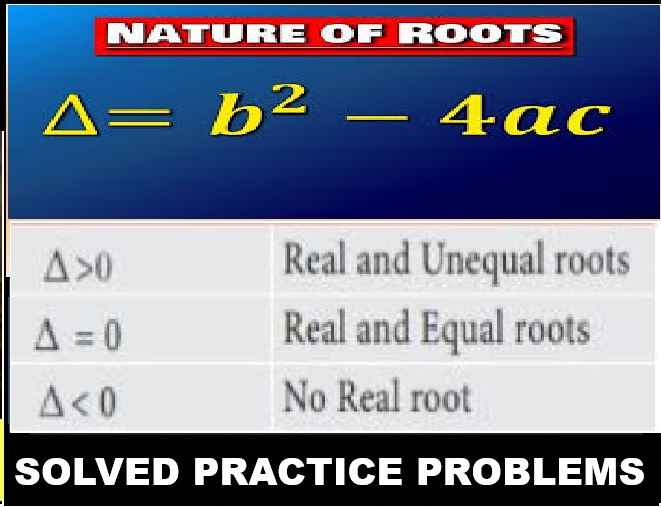MCQ Endocrine System Class-10 for ICSE Biology Sem-2 Sec-A . These MCQ / Objective Type Questions is based on latest reduced syllabus according 2021-22 session on bifurcated pattern. Main motto of MCQ Type Question is cracking the next upcoming Sem-2 exam of council. Visit official website CISCE for detail information about ICSE Board Class-10 Biology.
Sem-2 Sec-A MCQ Endocrine System Class-10 for ICSE Biology

| Board | ICSE |
| Class | 10th (X) |
| Subject | Biology |
| Chapter | Endocrine System |
| Syllabus | on bifurcated syllabus (after reduction) |
| Session | 2021-22 |
| Bifurcated | Sem-2 |
| Topic | MCQ / Objective Type Question for Sec-A |
Sec-A Sem-2 ICSE Class-10 Biology MCQ Type Questions of Endocrine System
1. A gland having endocrine as well as exocrine function
(a) Pituitary
(b) Thyroid
(c) Pancreas
(d) adrenal
Answer (c) pancreas
2. Exophthalmic goiter is caused due to the overactivity of
(a) thymus
(b) thyroid
(c) parathyroid
(d) adrenal cortex
Answer (b) thyroid
3. The deficiency of ADH causes:
(a) diabetes mellitus
(b) diabetes insipidus
(c) dwarfism
(d) acromegaly
Answer (b) diabetes insipidus
4. This hormone is not secreted by Hypothalamus
(a) PRH
(b) FSH
(c) CRH
(d) TRH
Answer: (b) FSH
5. This is the most abundant hormone produced by the anterior pituitary
(a) LH
(b) TSH
(c) ACTH
(d) GH
Answer: (d) GH
6. This is not an endocrine gland
(a) Adrenal
(b) Pituitary
(c) Lacrimal
(d) Thyroid
Answer: (c) Lacrimal
7. Cortisone hormone is secreted by :
(a) Medulla of adrenal
(b) Cortex of adrenal
(c) Pancreas
(d) Thyroid
Answer: (c) Cortex of adrenal
8. Which one of the following hormones converts excess of glucose into glycogen
(a) Glucagon
(b) Thyroxine
(c) Insulin
(d) Adrenaline
Answer: (c) Insulin
9. Which one of the following hormones stimulates the breakdown of glycogen in the liver into glucose :
(a) Insulin
(b) Adrenaline
(c) Glucagon
(d) Thyroxin
Answer: (c) Glucagon
10. Pituitary hormone triggering the male testes to generate sperm and in females, triggering follicular development on a monthly basis is
(a) prolactin
(b) growth hormone
(c) follicle-stimulating hormone
(d) luteinizing hormone
Answer: (c) follicle-stimulating hormone
11. This hormone is responsible for “fight-or-flight” response
(a) Thyroxine and melatonin
(b) insulin and glucagon
(c) epinephrine and norepinephrine
(d) oestrogen and progesterone
Answer: (c) epinephrine and norepinephrine
12. Difference between endocrine and exocrine glands is that
(a) endocrine glands release hormones, exocrine glands release waste
(b) endocrine glands are interconnected, exocrine glands are totally independent
(c) endocrine glands are formed by epithelial tissue, exocrine glands are connective
tissues primarily
(d) endocrine glands are ductless, exocrine glands release secretions into ducts or at the surface of the body
Answer: (d) endocrine glands are ductless, exocrine glands release secretions into ducts or at the surface of the body
13. This is Not a Function of Insulin
(a) Decreasing glycogenolysis
(b) Lipogenesis
(c) Gluconeogenesis
(d) Glycogenesis
Answer: (c) Gluconeogenesis
14. The Action of Parathormone in the Human Body
(a) Decreases blood sodium level
(b) Increases blood sodium level
(c) Decreases blood calcium level
(d) Increases blood calcium level
Answer: (d) Increases blood calcium level
15. Effects of Hypothyroidism Include All but This
(a) Diarrhoea
(b) lethargy
(c) Anorexia
(d) Weight gain
Answer: (a) Diarrhoea
16. Glucagon
(a) Accelerates protein synthesis within cells
(b) Accelerates the conversion of glycogen into glucose
(c) Decreases the conversion of glycogen into glucose
(d) Slows down glucose formation from lactic acid
Answer: (b) Accelerates the conversion of glycogen into glucose
17. Select and rewrite the correct answer to the given statement from the four choices given below. Insulin is secreted by
(a) beta cells of pancreas
(b) alpha cells of pancreas
(c) delta cells of pancreas
(d) None of these
Answer: (a) beta cells of pancreas
18. A gland which secretes both hormone and enzyme is
(a) pituitary
(b) pancreas
(c) thryoid
(d) adrenal
Answer: (b) pancreas
19. Which of these is true of the endocrine system?
(a) secretes hormones that are transported to target cells by blood
(b) causes changes in metabolic activities
(c) effects are prolonged
(d) All of above are true.
Answer: (d) All of above are true.
20. Name the gland that is located at the base of the throat, just inferior to the laryngeal prominence (Adam’s apple).
(a) Pituitary.
(b) Pineal gland.
(c) Hypothalamus.
(d) Thyroid.
Answer: (d) Thyroid.
21. What gland is located just superior to the kidneys?
(a) Pituitary.
(b) Adrenal.
(c) Pancreas.
(d) ovaries
Answer: (b) Adrenal.
22. In the pancreas, which are the cells that secrete insulin, decrease the blood levels of glucose.
(a) delta.
(b) alpha.
(c) beta.
(d) beta.
Answer: (d) beta.
23. This is not a function of insulin
(a) decreasing glycogenolysis
(b) lipogenesis
(c) gluconeogenesis
(d) glycogenesis
Answer: (c) gluconeogenesis
24. Action of parathormone in the human body
(a) decreases blood sodium level
(b) increases blood sodium level
(c) decreases blood calcium level
(d) increases blood calcium level
Answer: (d) increases blood calcium level
25. Effects of hypothyroidism include all but this
(a) Diarrhoea
(b) lethargy
(c) Anorexia
(d) Weight gain
Answer: (a) Diarrhoea
26. Pituitary Hormone Triggering the Male Testes to Generate Sperm and in Females, Triggering Follicular Development Every Month Is
(a) Prolactin
(b) Growth hormone
(c) Follicle-stimulating hormone
(d) Luteinizing hormone
Answer: (c) Follicle-stimulating hormone
27. This Hormone Is Responsible for the “Fight-or-Flight” Response
(a) Thyroxine and melatonin
(b) Insulin and glucagon
(c) Epinephrine and norepinephrine
(d) Oestrogen and progesterone
Answer: (c) Epinephrine and norepinephrine
28. Difference Between Endocrine and Exocrine Glands is That
(a) Endocrine glands release hormones while exocrine glands release waste
(b) Endocrine glands are interconnected but exocrine glands are totally independent from each other.
(c) Endocrine glands are formed by epithelial tissue, exocrine glands are connective tissues primarily
(d) Endocrine glands are ductless, exocrine glands release secretions into ducts or at the surface of the body
Answer: (d) Endocrine glands are ductless, exocrine glands release secretions into ducts or at the surface of the body
29. This Hormone is Not Secreted by Hypothalamus
(a) PRH
(b) FSH
(c) CRH
(d) TRH
Answer: (b) FSH
30. This is Not an Endocrine Gland
(a) Adrenal
(b) Pituitary
(c) Lacrimal
(d) Thyroid
Answer: (c) Lacrimal
31. Which one of the following glands is also called the master gland :
(a) Pituitary gland
(b) Adrenal glandnd
(c) Thyroid gland
(d) Ovary
Answer: (a) Pituitary gland
32. The emergency hormone to face the danger or to fight is secreted by;
(a) Islets of Langerhans
(b) Adrenal cortex
(c) Pituitary
(d) Adrenal medulla
Answer: (d) Adrenal medulla
33. Which one of the following endocrine glands produces its hormone in large quantities as a result of emotional stimulation;
(a) Thyroid
(b) Islets of Langerhans
(c) Adrenal medulla
(d) Adrenal cortex
Answer: (c) Adrenal medulla
34. In humans, increased thyroxine production results in :
(a) Increased metabolism
(b) Decreased metabolism
(c) Dwarfism
(d) Cretinism
Answer: (a) Increased metabolism
35. In Which of the Following Pairs, the Hormone of Endocrine Glands and Its Primary Action Is Incorrect or Mismatched?
(a) Calcitonin – Lower blood calcium levels
(b) Parathyroid – Raises blood calcium levels
(c) Somatostatin – Inhibits release of glucagon
(d) Melatonin – Regulates the rate of cellular metabolism
Answer: (d) Melatonin – Regulates the rate of cellular metabolism
36. Where Are Islets of Langerhans Found?
(a) Anterior pituitary
(b) Cortex
(c) Spleen
(d) Endocrine pancreas
Answer: (d) Endocrine pancreas
37. Diabetes Mellitus Is a Hormonal Condition in Which
(a) Ketone bodies increases in urine
(b) Ketone bodies decreases in urine
(c) Urine becomes more dilute
(d) None of the above
Answer: (a) Ketone bodies increases in urine
38. What Does Somatostatin Do?
(a) Inhibits release of insulin and glucagon
(b) Stimulates release of insulin and glucagon
(c) Stimulates glucagon release while inhibits insulin release
(d) Inhibits glucagon release while stimulates insulin release
Answer: (a) Inhibits release of insulin and glucagon
39. Which of the Following Endocrine Glands Contributes to Setting the Body’s Biological Clock?
(a) Pituitary gland
(b) Pineal gland
(c) Thymus gland
(d) Adrenal gland
Answer: (b) Pineal gland
40. The digestive juice which has no enzyme is



Helpful